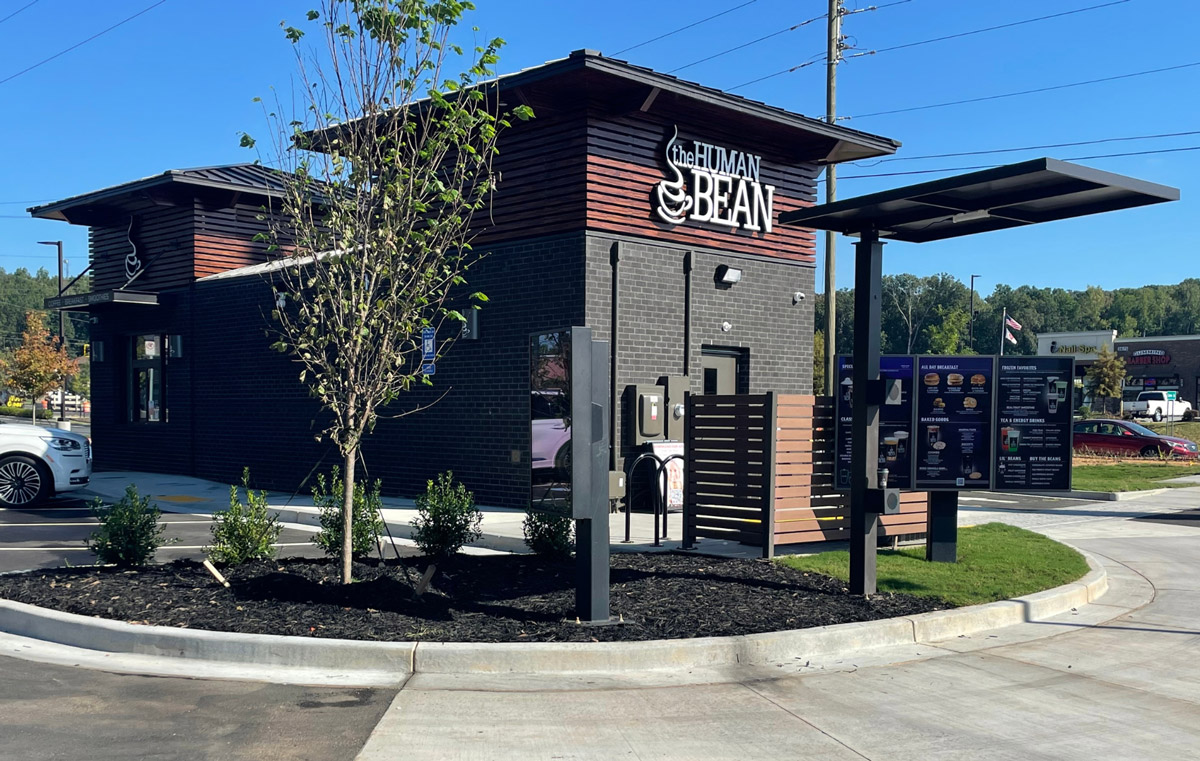5 Key Trends Impacting CMS Platforms - Right Now

Content Management Systems (CMS) were once basic systems for content delivery. Now, they play a much more essential role in of technology or software as a service. With the proliferation of online platforms and the increasing demand for seamless customer experiences across various channels, modern CMS platforms have become indispensable tools for dynamic distribution, optimization and now monetization of content–enabling businesses to engage with their audiences consistently and meaningfully across the entire customer journey.
At the heart of Creative Realities' CMS platform solutions are Jason Donnini, Director of Product Management, and Amanda Starr, Vice President of Content Strategy. Jason spearheads efforts to enhance and innovate the CMS, while Amanda shapes the strategic direction of the content and how CMS platforms need to perform in order for content to behave and function as a cohesive part of the visual merchandising and transactional mix.
Jason and Amanda actively listen to client requirements, and feedback and dial in to industry trends to ensure that the CMS caters effectively to customers across various sectors, spanning from QSR to retail. They recently engaged in a discussion regarding the current and future influences on CMS software in the broader sense as part of a key component of digital signage solutions. Here is the summary from that discussion organized around what’s in demand right now.
1. Personalization, 2.0
The shift towards hyper-personalization has taken many industries by storm. Digital natives are expecting technology to behave in responsive and curated ways—including in enterprise applications. In CMS software, personalization is showing up in its ease-of-use, adaptability to different user roles, and increasingly sophisticated data-driven content suggestions.
In the food and beverage sector in particular, CMSs are being designed to support responsive strategies that cater to individual consumer behaviors. For instance, platforms that adjust pricing in real-time or recommend products for impulse purchases based on user interactions on mobile apps are becoming standard.
“Brands are getting more savvy [with] tracking the analytics of customer interaction,” says Jason. “They’re realizing that there’s a science behind personalization, a way to crack the code for customer satisfaction, in a sense. . . [a CMS] needs to be able to adapt to the different types of data (and handle several data streams) in order to be able to trigger the right content at the right time, for the right customer. Timing and context are everything and the right kind of CMS software will give you both.”
2. Monetization of digital assets
As businesses increasingly operate across multiple digital channels, there is a pronounced push across industries to monetize these platforms more effectively. Beyond serving as platforms that help manage content, today's CMS solutions are equipped with powerful tools that help with revenue generation. Integrating sophisticated advertising systems enables these platforms to embed ads directly within a business’ content stream, making every digital interaction a potential revenue opportunity.
CMS platforms are also automating the enterprise structures of businesses. This means a CMS can now intuitively learn and adapt to a company’s organizational framework, allowing for a more effective and efficient content management approach. This not only enhances the relevance of content and ads to various user segments but also elevates the overall content delivery strategy.
CMS systems power retail media networks to deliver purposeful content layered with programmatic advertising. These owned networks allow retailers act as publishers, distributing content and advertisements to an engaged audience in a in a way that is attribution-driven, based on aggregated data about who is in front of the screens.
3. Metrics that matter
There’s no such thing as just “winging it” in a world where data-backed personalization is necessary to stay ahead. That’s why the ability of a CMS to provide actionable insights through advanced analytics is invaluable today.
Businesses are increasingly in need of software and applications that can give them detailed reporting on consumer behavior, content performance, and overall operational efficiency. These metrics not only inform strategic decisions but also help in tailoring the content to meet the demands of various customer audiences.
But, it’s equally important to track quality metrics that help illustrate a story or behavior. CMS platforms today can provide all sorts of information–but information overload runs rampant because of this. Amanda says it’s important to ask, “What are you trying to understand from the data? “Because, otherwise, we can give you hundreds of spreadsheets. But what do you really want to know from those spreadsheets? What can we really help serve you with?”
For example, in the food industry, certain key metrics are particularly valuable for understanding consumer interaction and business performance. Tracking the number of interactions per menu item can give insight into consumer preferences and/or dietary preferences. Dwell time, or the amount of time customers spend interacting with a kiosk, lets a business know how effectively their menu is laid out and whether their promotional content is effective. Conversion rate in this context is measured by actions such as adding items to the order or engaging with upselling opportunities.
Operational efficiency metrics also make an impact in business health. Metrics such as the speed of content updates and the responsiveness of the CMS to changes in consumer demand during peak times like holidays or special events can help restaurants tailor their content more effectively, leading to increased customer satisfaction and loyalty, and higher revenue through targeted advertising and partnerships with food brands.
“The ability of a CMS to dissect and present complex datasets in a user-friendly manner really gives businesses the upper hand,” notes Jason. “Having access to this level of insight allows businesses to stay responsive to current appetites and trends and anticipate future shifts in customer preferences. That’s the key to maintaining a competitive edge today—knowing what your customers want today and anticipating what they’ll want tomorrow.”
4. AI for self-healing
“AI is a hot topic in a lot of different areas, but AI integration, as it relates to content management software, is revolutionizing the maintenance and functionality of these systems,” says Jason. “There’s so much to be said on the topic, but one of the trends I’m most impressed with is the self-healing potential of AI integrations in this area.”
AI's capability to predict and rectify issues automatically—termed as “self-healing”—minimizes downtime and enhances system reliability. This is crucial for CMSs that interact with physical hardware in digital signage networks, where uptime is critical. The self-healing feature of AI allows for continuous service by allows for continuous service by automatically detecting and resolving faults before they cause system failures.
For example, if a digital sign has a glitch that could potentially freeze the screen while in-use, AI can reboot the system or switch to a backup configuration to keep the display operational.
“‘Self-healing’ is a phrase that might give off a new age connotation,” Amanda laughed, “But in the context of AI it’s actually very pragmatic. It’s a tool that helps create a stronger web of fail-safes in a business’ operational backend. Fail-safes matter a ton in an environment that’s as fast-paced and customer-oriented as the food service industry.”
5. The value of kiSSSS
Amanda and Jason agree that the modern CMS is defined by four key attributes: simplicity, scalability, security, and being a “single-stop shop”. These features ensure that CMSs are user-friendly, can handle increasing loads, safeguard data, and consolidate various functionalities into a single platform, respectively.
Simplicity (ease of use and intuitiveness)
Example: A shopping mall uses a digital signage CMS for managing and updating its directory displays and promotional screens. The CMSs’ easy-to-use interface allows staff members - of whom don’t come from tech backgrounds - to quickly update digital content as inventory and store hours change. This simplicity enables timely updates which are of particular importance during seasonal rushes.
Scalability (the ability to scale and up-level quickly)
Example: A cinema chain uses comprehensive digital signage CMS to manage content across their many locations. Each time the chain promotes new movie releases and special events, the system seamlessly scales to handle high-res video content and scheduling across all screens. This scalability ensures that as the chain grows, the CMS can support additional screens and more complex content requirements without compromising quality.
One-Stop Shop (having one CMS for all things)
Example: An airport uses a CMS system to manage everything regarding flight information, advertising campaigns, and timely notifications. Integrating these functionalities into a single CMS simplifies workflow and provides consistency across all digital displays.
Security (ensuring data privacy and security)
Example: An office building uses digital signage CMS software to display internal communications and advertisements. Robust security features protect corporate information displayed on the screens during meetings, making sure all data transmissions to and from any forms of signage are encrypted.
Applying these values to our purpose built software
We’re continually adapting and evolving our CMS software stack to remain out front with what buyers and influencers need to extract new commercial value. Products like ReflectView™ and Clarity™ have been designed to meet the diverse needs of different industries by delivering targeted, timely content—whether that’s on digital menu boards, through retail media networks, or interactive / endless aisle kiosks.
“Each solution we offer is not just versatile—they’re also exceptionally adept at fulfilling the specific demands of each vertical. Our strength lies in our ability to put our vertical knowledge base to work for our clients to cross-pollinate ideas and features across different platforms,” notes Amanda. “There’s a lot of cross-learning between our platforms. This approach allows our clients to engage at the level of current trends while anticipating what’s up ahead.”
Share this
You May Also Like
These Related Stories

What’s Brewing: How Creative Realities is Perking up the Coffee Sector

What Is a Digital Signage Content Management System?


